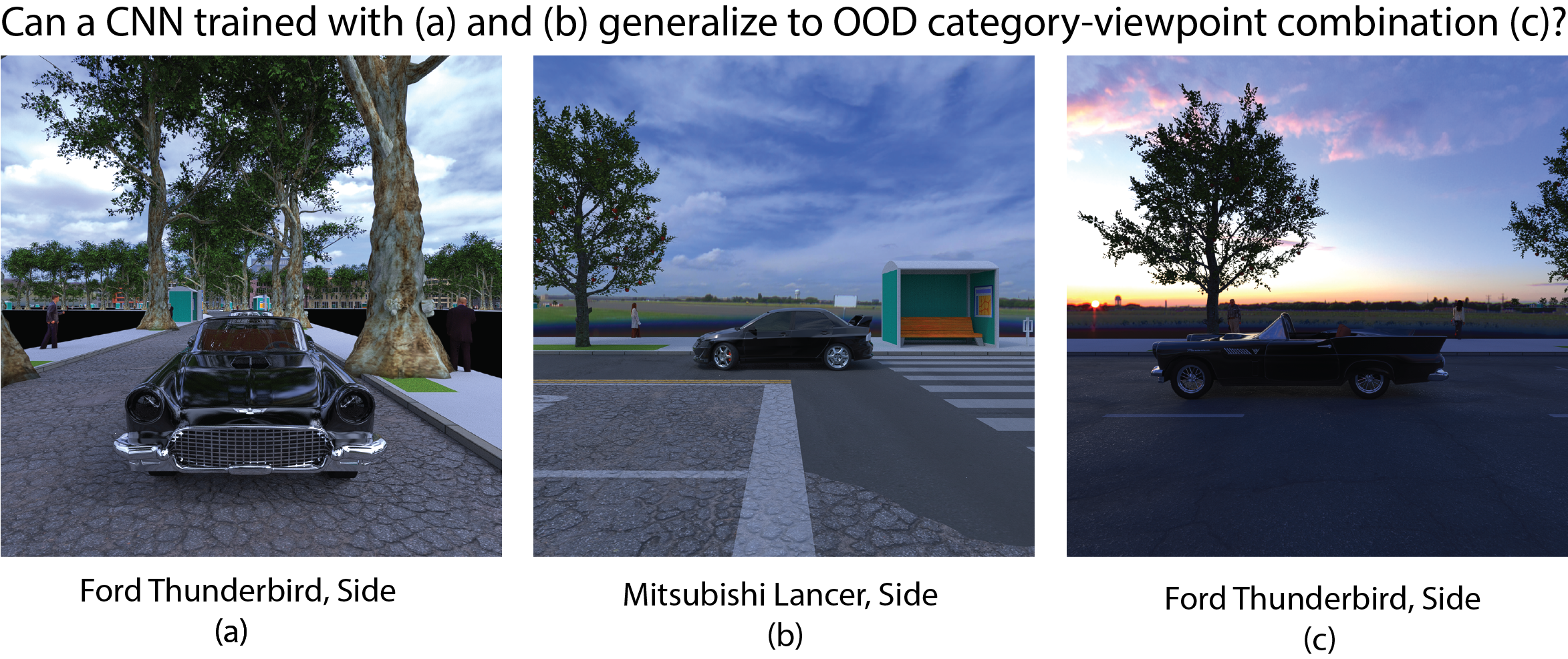When and how CNNs generalize to out-of-distribution category-viewpoint combinations
Object recognition and viewpoint estimation lie at the heart of visual understanding. Recent works suggest that convolutional neural networks (CNNs) fail to generalize to out-of-distribution (OOD) category-viewpoint combinations, ie. combinations not seen during training. In this paper, we investigate when and how such OOD generalization may be possible by evaluating CNNs trained to classify both object category and 3D viewpoint on OOD combinations, and identifying the neural mechanisms that facilitate such OOD generalization. We show that increasing the number of in-distribution combinations (ie. data diversity) substantially improves generalization to OOD combinations, even with the same amount of training data. We compare learning category and viewpoint in separate and shared network architectures, and observe starkly different trends on in-distribution and OOD combinations, ie. while shared networks are helpful in-distribution, separate networks significantly outperform shared ones at OOD combinations. Finally, we demonstrate that such OOD generalization is facilitated by the neural mechanism of specialization, ie. the emergence of two types of neurons -- neurons selective to category and invariant to viewpoint, and vice versa.
PDF Abstract



 MNIST
MNIST